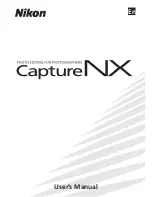
3-27
Cisco H.323 Signaling Interface User Guide
OL-4806-01 Rev. A14
Chapter 3 Provisioning the Cisco HSI
HSI Feature Configuration
Configuring G.726 on the Cisco HSI
The G.726 codec enables transcoding a PCM channel to or from an ADPCM data stream. The standard
supports four data rates:16, 24, 32 and 40 kbit/sec.
G.726 capability is advertised by the Cisco HSI and other H.323 gateways/endpoints in H.225 fast-start
elements, in H.245 (tunneled or a separate TCP/IP connection) terminal capability (TCS) messages, and
open logical channel (OLC) messages.
Currently, H.323 devices use several different methods to advertise G.726. ITU G.726 Annex B defines
one method, referred to in this document as g726-generic. Cisco H.323 gateways (for example, the Cisco
AS5400) support an alternate method referred to as g726-cisco. There is another method used by the
OpenH323 project; however, the Cisco HSI does not support that method.
MGCP gateways advertise G.726 capability using the method described in RFC 3551 (RTP Profile for
Audio and Video Conferences with Minimal Control). The four data rates use dynamic payloads;
however, the 32kbit/sec data rate, alternatively, can have a static payload value of 2 (this alternative value
is being phased out).
You can configure the Cisco HSI for 32kbit/sec MGCP support using dynamic or static payload values.
In addition, you can configure the Cisco HSI to support g726-generic and/or g726-cisco for the H.323
signaling. If possible, it is best to select g726-cisco for your network because it offers additional
flexibility.
The g726-generic method cannot indicate the data rate in H.245 TCS messages. The ITU standard
specifies that the data rate is only advertised in the OLC messages.
Note
The H.245 ASN.1 syntax supports advertising the bitrate in TCS messages; however, G.726 Annex B
prohibits advertising the bitrate in TCS messages. The Cisco HSI advertises the bitrate in the TCS
messages as a “hint”; however, H.323 gateways/endpoints might not extract the field and take advantage
of the presence of the bitrate in the TCS message.
The fact that the g726-generic method cannot indicate the data rate in an H.245 TCS message is not a
problem if the MGCP gateway and your network are designed to support all data rates for this codec.
However, if all data rates are not supported, it is possible for the remote endpoint/gateway to select a
non-preferred or non-supported data rate in the OLC message.
Note
For example, a data-rate preference list may establish the following order: G.726-16kbit/sec (highest
preference), G.711-Alaw (second preference), G.726-24kbit/sec (lowest preference). In this case, a
remote endpoint could select G.726-24kbit/sec in the OLC message; whereas, the Cisco HSI would
prefer G.726-16kbit/sec. In this example, the next preferred codec ought to be G.711 A-law and not
G.726-24kbit/sec. However, the g726-generic limitation enables the remote endpoint to select the least
preferred codec.
If a data-rate preference list specifies only a single rate (for example, G.726-16kbit/sec), it is not possible
to advertise this fact in the TCS message. Subsequently, the remote endpoint may attempt to open the
media stream using an unsupported data rate (perhaps, G.726-24kbit/sec).
Whenever OLC messages are exchanged and a non-supported G.726 data rate is detected, to prevent
unnecessary call clearing, the Cisco HSI always attempts to send the data rate selection to the MGCP
gateway. If the MGCP gateway does not support the selected data rate, it sends a message to the Cisco
PGW to clear the call.
















































